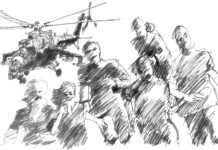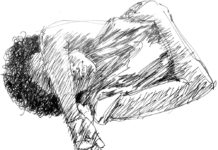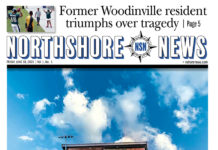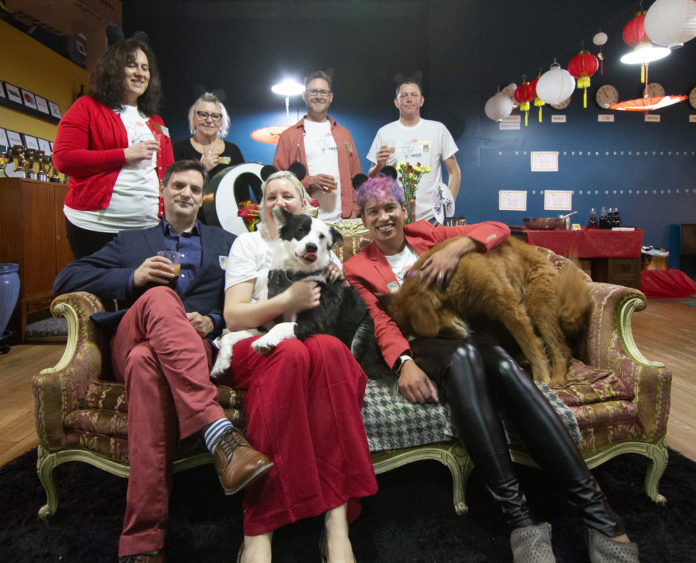My office is inside of what has been known as CHAZ—now called the CHOP zone for “Capitol Hill Occupied Protest”—a six-block area around the abandoned East Police Precinct. The Q&A team has been working from home since mid-March. Throughout the entire pandemic, I’ve made weekly visits to the office—which adjoins the East Precinct—to tend to general admin needs and rearrange the furniture so that the team has six feet of personal space once we enter Phase 2. After the murder of George Floyd by police in Minneapolis on May 25, and the Black Lives Matter protests that began in Seattle soon after, my attention shifted.
It wasn’t a surprise when the East Precinct became a focus and a stand-off between protesters and police. We’ve watched many marches and protests over the years begin or end on our street at the precinct. As tear gas rained down on protesters on the night of June 1, I received a number of texts and emails from friends checking in; they saw all of it happening right next to my office. I reassured everyone that we all were working from home and were safe. The next morning I remembered that my office windows were wide open.
It was surprisingly quiet on Tuesday afternoon. Minus a few barricades, the neighborhood seemed the same as it had the previous three months, which was already surreal due to the pandemic. I didn’t stay long, assuming the quiet was short-lived.
I didn’t go back until Monday, June 8. After seeing footage of Nikolas Fernandez drive his car through the crowd, shoot a protester and effortlessly walk up and into the police line, I was done watching. I was going to participate and actively support Black Lives Matter. I pulled out my steel-toed, leather boots and put together a packet of business cards and paperwork with my name and office address. I wanted to be able to prove to anyone who stopped me that I belonged in the area.
As I made my way closer to the protest zone, I stopped at each station, asking if they needed any signage or flyers. As a designer, helping with communication materials is my best contribution. I was directed to the primary medic station at Rancho Bravo, where they had signage that needed to be retyped and printed.
I entered 12th Avenue through the south-end police blockade. I was allowed to enter with just my word. Three big buses drove in behind me, filled with National Guard troops. They gathered outside my window, getting their riot gear in order. That evening, the East Precinct was boarded up and abandoned by police.
Going to office that next day was such a different experience. The fearful, angry, tense energy had changed to a quiet and peaceful determination. Firefighters from nearby Station 25 were there talking to people on the street. City workers came in to remove concrete blockades and help organizers with the water-filled barriers.
There are no armed protesters blocking entry into the area. You can walk in and out freely. I have been there in the morning, afternoon and up until 9p.m., and I’ve never seen anyone brandishing any weapons. There are people on watch at each entry point to look out for suspicious activity. When I asked a couple of them about armed protesters, they said that just like on the right, there are gun “enthusiasts” on the left, but most of that happened during the police standoff and the immediate hours after the police abandoned the precinct.
Police have not had any formal reports of protesters extorting businesses. They initially reported it, based on rumors, and the news media ran with it. The Seattle Times wrote on June 11, “Restaurant owners said they hadn’t heard any reports of extortion in the Autonomous Zone. On the contrary: Sales are strong and the increase in walk-up business is cutting down on delivery costs.”
There are speakers, musicians, artists painting murals, information tables, medical stations, and food stands. There are boards where you can leave a note about something you’ve learned. There are seating areas encouraging people to have conversations about anti-racism. Business owners, managers and neighbors are right there supporting the BLM movement. Restaurants are open. People are inside spending money.
Last week I posted my experience and photos on social media. And while I received overwhelmingly positive responses, some friends who shared my post had comments to the contrary. The accusations included: I think anyone can start their own country, I condone anarchy, I’m a socialist, and there was a suggestion I move to Venezuela. I find it interesting that because my experience didn’t fit with these people’s ideology, they had to put me into an extreme position.
I don’t know what will happen moving forward. But I’m proud of my neighborhood, and I’m hopeful that this is just the start of real change.
Wendy Quesinberry’s Quesinberry and Associates (Q&A) is a creative firm specializing in brand strategy and helping clients shift paradigms, become more sustainable, and serve their communities better. She has 25 years of design and strategic brand-development experience, having worked on projects for clients such as: Amazon, children’s TV idol Bill Nye the Science Guy, Hampton Inn & Suites, Holland America Line, Kimpton Hotels & Restaurants, Microsoft, multiple NGOs, Trupanion and UPS.







Great post Wendy! Thank you. I went to Burnley at Broadway and East Pine and remember the war protests. My first office was on 11th across from the original REI. And I’ve lived in the area or close to it off and on over the course of my life. I’ve always felt that it provides the best of what cities can provide: the opportunity to rub shoulders with people who are different from you but just people after all.
Comments are closed.